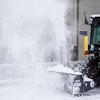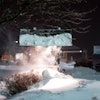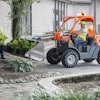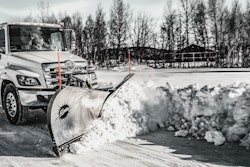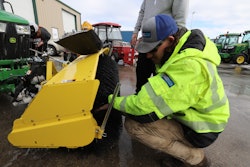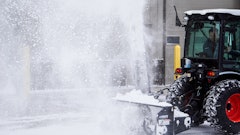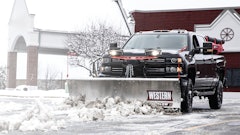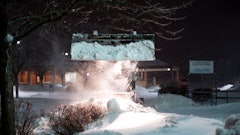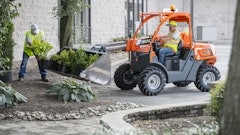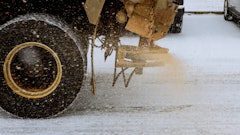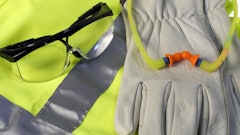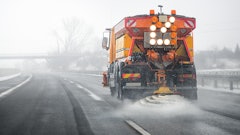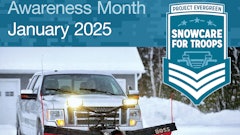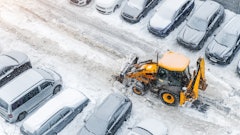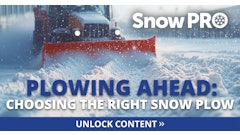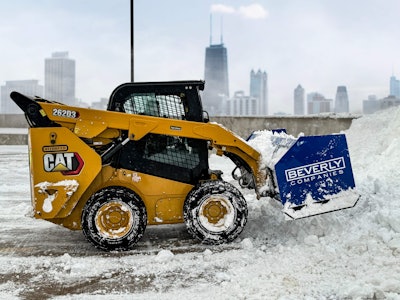
As summer fades and fall advances, the clock is ticking for snow removal companies. Those best prepared before the first storm will reap the rewards.
A single major storm can generate the lion’s share of your seasonal revenue, so downtime, mechanical failures, or crew unpreparedness can be devastating. Make sure you have a strategy to enter the season with confidence.
 An example of the potential damage when one doesn't take care of their brine and salting equipment. Beverly Companies
An example of the potential damage when one doesn't take care of their brine and salting equipment. Beverly Companies
By layering your tasks over several months, you reduce last-minute stress and improve execution.
Key milestones:
- August: Finalize route zones, begin equipment audits.
- September: Order parts, begin crew training, draft contracts.
- October: Full vehicle prep, trial runs, client communications.
- November: Final checks, staffing/backup plans, soft launches (if early snow).
 Beverly Companies
Beverly Companies
Equipment & Fleet Readiness
Your machines are your revenue engine. Treat them accordingly. Do a full mechanical inspection and preventative maintenance. Check and replace worn cutting edges or plow blades. Inspect hydraulic systems (hoses, fittings, leaks). Test all wiring, lights, strobes, battery terminals, and corrosion.
Service tires (check tread, alignment, pressures), brakes, and suspension. Ensure all chassis fluids are fresh; top off antifreeze (as needed). For spreaders, test spinner, auger, calibration systems, and clear any blockages. Lubricate all pivot points and ensure mechanical integrity.
Stock essential spare parts (hoses, fittings, pins, belts, electricals) and have a parts procurement plan in season. Some of these tasks are discussed in industry writeups of “winter-ready equipment” checklists, emphasizing that breakdowns in storms are costly.
Modern snow contractors increasingly add vehicle telematics, GPS, and fleet management systems to reduce idle time, monitor route adherence, and track material usage (salt, deicer) in real time.
 Beverly Companies
Beverly Companies
This data becomes invaluable for performance measurement and claim support. Some municipal fleets have developed automated systems that convert GPS data into segment-level work orders.
Even with impeccable maintenance, breakdowns happen. Have backup trucks available or a rental agreement in place. Also consider cross-training crews to shift vehicles mid-storm if needed.
Human readiness is as important as mechanical readiness. Conduct winter safety training for aspects like operating in low visibility, black ice, cold stress, fatigue. Train on proper use of de‐icer chemicals, anti‐icing techniques, and calibrations. Run mock storm drills (pre-season simulations) to give crews muscle memory under stress.
Review manual plow operations, emergency procedures, and communications protocols. It’s important to define roles, structure, and cross-training. Clarify who dispatches, who monitors route changes, and who handles client messaging. You can even institute incentives or bonus structures to reward performance, on-time completion, and low rework.
More about preparing for snow on GreenIndustryPros.comThree Tips to Prepare Skid-Steer Loaders for Snow Removal - Create a game plan for maximizing skid-steer loaders for snow removal. How to Add Anti-Icing to Your Snow and Ice Strategy - Here's how to get started and incorporate anti-icing into a snow and ice management strategy. Efficiency Extraordinaires: Streamlining Snow Operations - Snow removal professionals describe how they best prepare in season and out of season for whatever snow events come roaring their way. |
Mapping, Routing & Zone Strategy
No more guesswork. It’s essential to map, optimize, and prioritize. Create detailed site maps and push maps. For commercial clients, generate site maps showing all drive aisles, sidewalks, pathways, and where snow should be pushed/sent.
You can also use these maps in your contract negotiations and client rollouts. It's important to flag obstacles, low curbs, irrigation heads, transformer vaults, and other hazards.
It’s important to define and cluster service zones. Partition neighborhoods or commercial corridors into logical clusters. Group clients by proximity to reduce deadhead time. Assign routes to vehicles so workloads are balanced. There is software available for this as well. Leverage algorithms that factor distance, travel constraints, priority orders, vehicle capacity, and real-time traffic or road closures. Track metrics like time per route, idle time, salt usage, and deviations. Beverly Companies
Beverly Companies
Pre-planning & Pre-season
A well-prepared operator is a trusted operator in clients’ minds. Review and update contracts as needed. Ensure terms clearly define scope, timing, snow push zones, priorities, and limits. Build clauses for “extra snow” or unforeseen conditions. Price with realistic buffers for overtime, interchangeable resources, and liabilities.
Issue RFPs and pre-season walkthroughs. If bidding for new accounts, send RFPs in July or August to get ahead of the competition. Walk sites pre-season to confirm access points, snow placement, and hazards.
Share schedule expectations (e.g., 2–4 inches triggers, response windows). Use alerting systems (email/text) so clients know when their site is on the route or completed. Make sure to maintain “proof of service” records (photos, time stamps) to defend or clarify disputes.
 Beverly Companies
Beverly Companies
You won’t get far without salt, deicers, and parts. Order salt, de-icer, liquid brine, and abrasives early (bulk procurement often has lead times). Stock additional chemicals, including backup suppliers. Secure hose, fittings, chains, pins, electrical connectors, and fabric for repair kits. Ensure loading facilities (salt sheds, bins) are operational and accessible. Test spreading calibration before the storms begin.
Before the first snow falls, run through the motions. Do trial runs of routes at night or in light snow to test timing, sequencing, and route flow. Monitor how long segments take, where bottlenecks or overlaps occur. Use those trials to adjust assignments, swap clients or routes as needed.
Post-Season Review & Feedback Loop
Your prep doesn’t end when the snow melts. At season’s end, conduct a formal review: what went well, what failed. Audit contract performance, customer complaints, and mechanical failures. Use season data (route times, fuel usage, breakdowns) to benchmark for next year.
Repair any site damage (curbs, asphalt, landscaping), remove snow stakes. Update maps, add new client sites, and adjust push zones based on lessons learned.
When winter storms loom, the best snow removal companies have had months of planning, calibration, and training. The difference between a smooth season and a chaotic one often boils down to preparation. Well-tuned machinery, empowered crews, optimized routing, clear client communication, and data-driven monitoring. Start early, operate deliberately, learn continuously, and when the first flake falls, your operation can shift from scramble mode into steady rhythm.

